Brant Goose
- February 21, 2024
- 0 comment
The Brant Goose, also known scientifically as Branta bernicla, is a fascinating species of waterfowl renowned for its striking appearance and remarkable migratory behavior. These geese are characterized by their black heads, necks, and breasts, contrasted by a distinctive white patch on their necks. Despite being relatively small compared to other geese species, typically measuring around 24 to 26 inches in length, Brant Geese exhibit impressive strength and endurance during their annual migrations.

Found across various coastal regions of North America, Europe, and Asia, Brant Geese are known for their affinity for coastal habitats, particularly during the breeding season. They nest in Arctic and subarctic regions, building their nests in coastal tundra habitats and diligently caring for their offspring. However, come autumn, these geese embark on extensive migrations, traveling thousands of miles to reach their wintering grounds in more temperate coastal areas.
During migration and wintering periods, Brant Geese often congregate in large flocks, displaying complex social behaviors and employing various strategies to evade predators. Their diet primarily consists of eelgrass, sea lettuce, and other aquatic vegetation, which they graze on in shallow waters along coastlines. Despite facing threats from habitat loss, pollution, and hunting pressure in certain areas, Brant Geese populations remain relatively stable, thanks in part to conservation efforts aimed at preserving their habitats and mitigating anthropogenic impacts.
| Attribute | Description |
|---|---|
| Scientific Name | Branta bernicla |
| Average Length | 24 to 26 inches |
| Average Weight | 2.2 to 4.4 pounds |
| Coloration | Black head, neck, and breast with a white patch on the neck |
| Habitat | Coastal regions of North America, Europe, and Asia |
| Preferred Habitats | Coastal tundra during breeding season; temperate coastal areas during migration and wintering periods |
| Diet | Primarily eelgrass, sea lettuce, and other aquatic vegetation |
| Feeding Behavior | Grazing in shallow waters along coastlines |
| Social Behavior | Often found in large flocks during migration and wintering periods |
| Reproduction | Monogamous pairs; build nests in coastal tundra habitats |
| Migration | Extensive migrations between breeding and wintering grounds |
| Conservation Status | Relatively stable populations; face threats from habitat loss, pollution, and hunting pressure |
| Cultural Significance | Featured in indigenous folklore and traditional practices; attract birdwatchers and nature enthusiasts |
| Economic Importance | Contribute to ecotourism and local economies through hunting and birdwatching tourism |
| Conservation Efforts | Habitat restoration, hunting regulations, and collaborative conservation efforts |
Exploring the Fascinating World of this Migratory Bird
The Brant Goose, scientifically known as Branta bernicla, is a species of waterfowl belonging to the Anatidae family. These geese are renowned for their remarkable migratory journeys and are often observed in various parts of the world.
Physical Characteristics
The Brant Goose, boasts distinctive physical characteristics that set it apart from other waterfowl species. These characteristics include its medium-sized build, typically measuring between 24 to 26 inches in length. One of the most striking features of the Brant Goose is its coloration, with a predominantly black head, neck, and breast, creating a stark contrast against its white patch on the neck. This unique color pattern serves as a key identifier for the species.
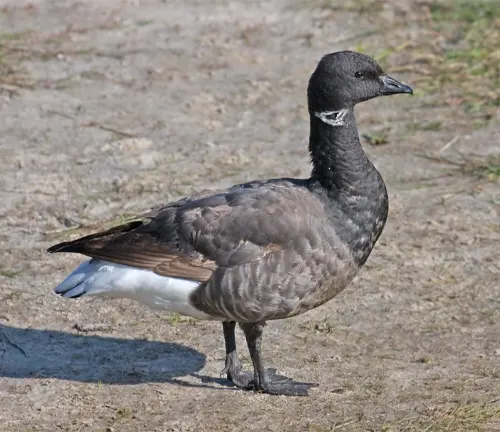

In addition to its coloration, the Brant Goose exhibits other notable physical traits. Its body is streamlined and compact, ideal for navigating through various aquatic environments. The wings are broad and powerful, enabling agile flight during migration and foraging activities. Despite its relatively small size compared to other goose species, the Brant Goose possesses strong wing muscles, allowing it to cover long distances during its annual migrations.
Another distinctive feature of the Brant Goose is its bill, which is short and stubby, perfectly adapted for grazing on vegetation along coastal areas. This specialized bill shape facilitates the goose’s feeding behavior, allowing it to efficiently extract and consume its primary food sources, such as eelgrass and sea lettuce.
Habitat and Distribution

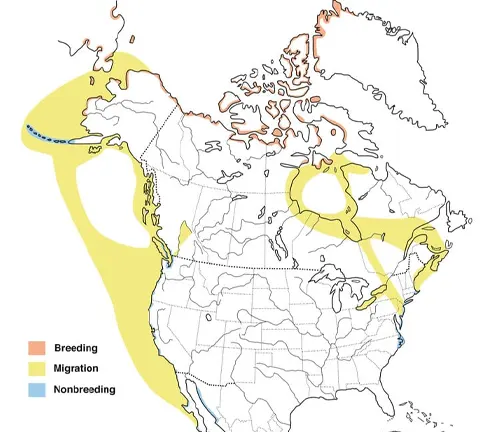
The habitat and distribution of the Brant Goose, are closely tied to coastal environments around the world. These geese exhibit a wide geographical range, inhabiting coastal regions of North America, Europe, and Asia.
During the breeding season, Brant Geese are primarily found in Arctic and subarctic regions, including coastal tundra habitats in northern Canada, Greenland, and Siberia. These areas provide suitable nesting grounds, with abundant vegetation and access to freshwater sources.
As the breeding season concludes, Brant Geese embark on extensive migrations to their wintering grounds. They travel southward to more temperate coastal areas, where they can find ample food resources and milder climates. Along the western coast of North America, Brant Geese winter in regions such as California, Oregon, and Mexico, while on the eastern coast, they frequent areas from the mid-Atlantic to the Gulf of Mexico. In Europe, they winter along coastal regions from the United Kingdom to France and the Netherlands.
Brant Geese are highly adaptable and can thrive in a variety of coastal habitats, including estuaries, salt marshes, mudflats, and coastal grasslands. These habitats provide abundant food sources, including eelgrass, sea lettuce, and other aquatic vegetation, which are essential for the geese’s survival during the winter months.
Diet and Feeding Habits
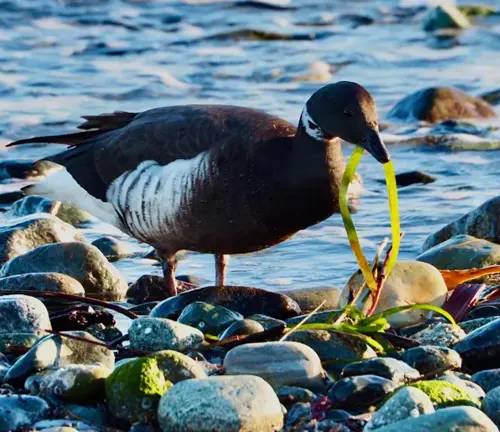

The diet and feeding habits of the Brant Goose, are specialized and primarily revolve around their coastal habitat and the availability of specific food sources. These geese are predominantly herbivorous, with a diet consisting mainly of aquatic vegetation found in coastal areas.
One of the primary food sources for Brant Geese is eelgrass (Zostera marina), a submerged aquatic plant commonly found in shallow coastal waters. They also feed on other types of seagrasses, such as dwarf eelgrass (Zostera noltii), as well as algae and sea lettuce (Ulva species). These vegetation types provide essential nutrients and energy for the geese, particularly during the winter months when other food sources may be scarce.
Brant Geese are known for their grazing behavior, where they feed by uprooting and consuming vegetation from the seabed or salt marshes. They typically forage in shallow waters along coastlines, using their specialized bill to pluck and ingest the tender shoots and leaves of aquatic plants. This feeding strategy allows them to efficiently extract nutrients from their food while minimizing energy expenditure.
During migration and wintering periods, Brant Geese may also supplement their diet with terrestrial plants, grains, and agricultural crops found in coastal fields and marshy areas. However, their preference for nutrient-rich aquatic vegetation remains the primary focus of their feeding habits.
Life Cycle
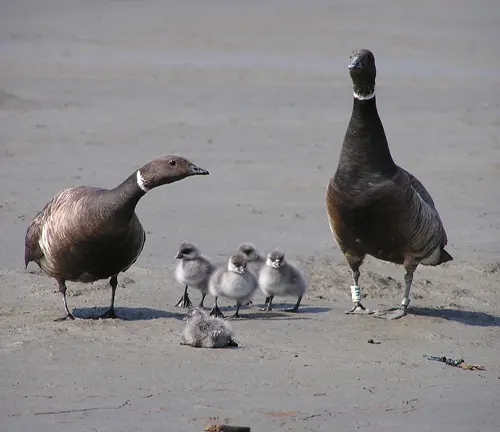
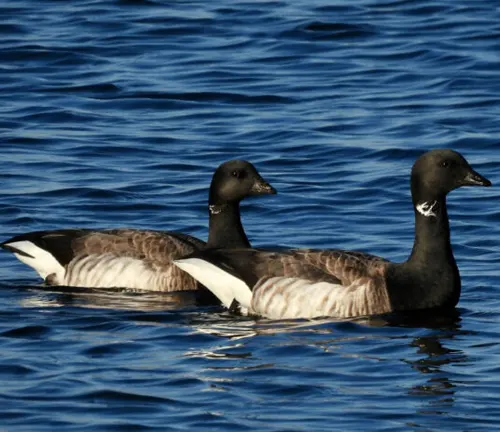
The life cycle of the Brant Goose, is a fascinating journey marked by seasonal patterns of breeding, migration, and nesting. Understanding the life cycle of these geese provides valuable insights into their reproductive behavior and ecological adaptations.
The life cycle begins in the spring when Brant Geese return to their breeding grounds in Arctic and subarctic regions after wintering in temperate coastal areas. Upon arrival, they engage in courtship rituals, where pairs form monogamous bonds that often last for multiple breeding seasons. Once paired, Brant Geese select nesting sites in coastal tundra habitats, where they build shallow nests lined with plant materials and down feathers.
After the nest is constructed, the female Brant Goose lays a clutch of eggs, typically consisting of four to six eggs, although clutch sizes may vary. Both the male and female take turns incubating the eggs, which hatch after approximately three to four weeks. The newly hatched goslings are precocial, meaning they are born with downy feathers and are capable of walking, swimming, and feeding shortly after hatching.
Throughout the summer months, the parent geese diligently care for their offspring, providing warmth, protection, and guidance as the goslings grow and develop. They feed their young a diet consisting mainly of aquatic vegetation, teaching them essential foraging skills and behaviors.
As summer transitions to autumn, Brant Geese prepare for their annual migration southward to their wintering grounds. They gather in large flocks along coastal areas, fueling up on food reserves and energy in preparation for the long journey ahead. The migration route varies depending on the population, with some geese traveling thousands of miles to reach their wintering destinations in temperate coastal regions.
During the winter months, Brant Geese remain in their wintering grounds, where they feed voraciously on abundant aquatic vegetation and forage in coastal habitats. They form cohesive flocks, engaging in social behaviors such as feeding, resting, and communal roosting.
Behavioral Adaptations
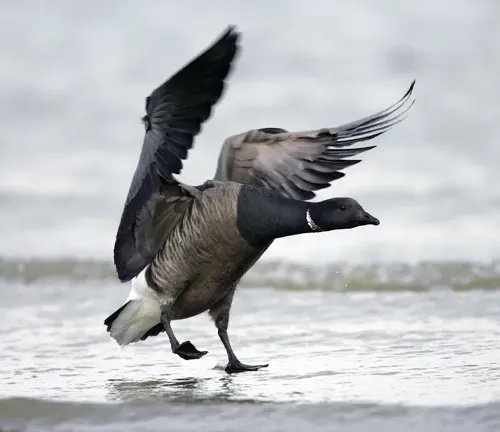
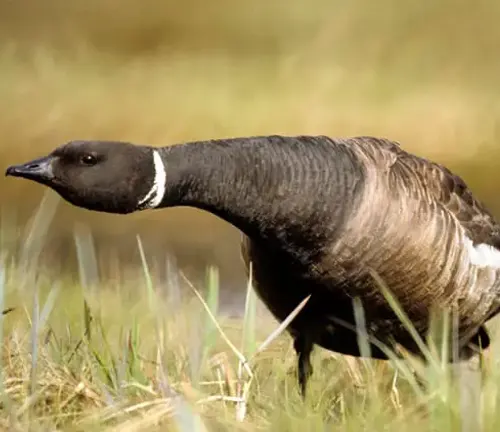
Behavioral adaptations are essential for the survival and success of the Brant Goose, in its coastal habitats and during its migratory journeys. These geese exhibit a range of behaviors that enable them to thrive in diverse environments and navigate the challenges they encounter throughout their lives.
One of the key behavioral adaptations of Brant Geese is their social behavior. These geese are often observed congregating in large flocks, particularly during migration and wintering periods. By forming cohesive groups, Brant Geese benefit from safety in numbers, as they can collectively detect and evade potential predators more effectively. Additionally, social interactions within flocks facilitate communication, resource sharing, and navigation during long-distance flights.
Another important behavioral adaptation of Brant Geese is their feeding behavior. These geese are specialized grazers, feeding primarily on aquatic vegetation such as eelgrass, sea lettuce, and other coastal plants. Their feeding strategy involves uprooting and consuming vegetation from shallow waters along coastlines, utilizing their specialized bill to extract nutrients efficiently. This adaptation allows Brant Geese to exploit abundant food resources in their coastal habitats, supporting their energy needs throughout the year.
Brant Geese also exhibit behavioral adaptations related to predation avoidance. Vigilance is a crucial aspect of their behavior, as they constantly scan their surroundings for potential threats, such as predators or disturbances. When sensing danger, Brant Geese may emit alarm calls or take flight as a collective response to evade predators and protect themselves and their offspring.
Furthermore, Brant Geese demonstrate adaptability in their migratory patterns and navigation abilities. These geese undertake extensive annual migrations between breeding and wintering grounds, relying on celestial cues, landmarks, and innate instincts to navigate over long distances. Their ability to navigate accurately during migration ensures they reach suitable habitats with ample food resources and favorable conditions for breeding and raising their young.
Conservation Status
The conservation status of the Brant Goose, varies depending on the specific subspecies and populations. Overall, Brant Geese are not currently classified as endangered, but they face conservation challenges and require ongoing monitoring and protection to ensure their long-term survival.
Several factors contribute to the conservation status of Brant Geese, including habitat loss and degradation, pollution, hunting pressure, and climate change. Coastal development, including the conversion of natural habitats for urbanization, agriculture, and infrastructure projects, has led to the loss of critical nesting and feeding areas for Brant Geese. Pollution from industrial activities, agriculture runoff, and oil spills can contaminate coastal waters and negatively impact the availability of clean water and food resources for Brant Geese.
Challenges and Threats
Brant Geese, like many other species, face a variety of challenges and threats that impact their populations and habitats. These challenges pose significant risks to the long-term survival and well-being of Brant Geese and require proactive conservation efforts to address effectively.
One of the primary challenges facing Brant Geese is habitat loss and degradation. Coastal development, including urbanization, agricultural expansion, and industrial activities, results in the loss of critical nesting and feeding habitats for Brant Geese. The conversion of natural coastal areas into residential or commercial zones disrupts the delicate balance of coastal ecosystems and reduces the availability of suitable habitats for nesting, foraging, and resting.
Pollution is another major threat to Brant Geese populations. Pollution from various sources, including industrial runoff, agricultural pesticides, oil spills, and plastic debris, contaminates coastal waters and poses risks to the health of Brant Geese and their prey. Pollution can affect water quality, food availability, and the overall ecological integrity of coastal habitats, making them less hospitable for Brant Geese and other wildlife.
Hunting pressure is also a significant threat to Brant Geese in certain regions. While regulated hunting can be sustainable and compatible with conservation goals, illegal hunting and poaching pose serious risks to Brant Goose populations, particularly during migration and wintering periods when they are more vulnerable. Inadequate enforcement of hunting regulations and lack of awareness about the importance of conservation contribute to the ongoing threat of overexploitation of Brant Geese.
Climate change represents a growing threat to Brant Geese and their habitats. Rising temperatures, altered precipitation patterns, and sea-level rise can disrupt migratory patterns, shift the distribution of food resources, and impact the availability of suitable breeding and wintering habitats for Brant Geese. These environmental changes can exacerbate existing conservation challenges and increase the vulnerability of Brant Goose populations to other threats.
Different Species
Branta bernicla bernicla
Also known as the Dark-bellied Brant Goose, this subspecies breeds in Arctic regions of northern Europe and western Siberia. During the winter, it migrates to coastal areas of western Europe and North Africa.


Branta bernicla hrota
Commonly referred to as the Pale-bellied Brant Goose, this subspecies breeds in Arctic regions of northeastern Canada and Greenland. It migrates to coastal areas of eastern North America during the winter.
Branta bernicla nigricans
The Black Brant Goose breeds in coastal regions of Alaska and Siberia. It is known for its dark plumage and distinctive white necklace. During the winter, it migrates to coastal areas of the Pacific coast of North America, particularly California and Mexico.
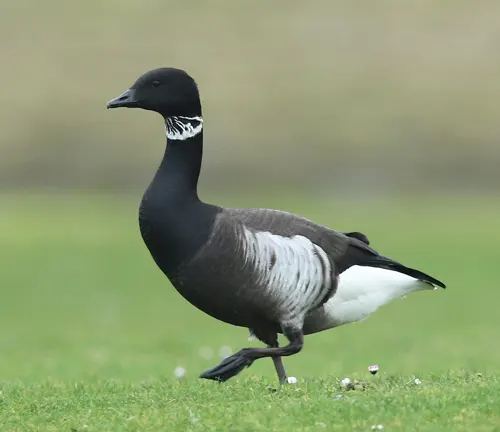

Branta bernicla orientalis
This subspecies, also called the Eastern Brant Goose, breeds in northeastern Siberia and winters in coastal areas of eastern Asia, including Japan and Korea.
Frequently Asked Questions (FAQs)
- What is the average lifespan of a Brant Goose?
Brant Geese typically live for about 10 to 15 years in the wild, although some individuals may live longer. - How fast can Brant Geese fly during migration?
Brant Geese can reach speeds of up to 50 miles per hour (80 kilometers per hour) during migration, aided by strong wing muscles and favorable wind conditions. - Do Brant Geese have predators?
Yes, Brant Geese have natural predators such as foxes, wolves, and birds of prey. They also face threats from human activities such as hunting and habitat destruction. - What is the significance of the white patch on the neck of Brant Geese?
The white patch on the neck of Brant Geese serves as a distinguishing feature and may play a role in visual communication during social interactions. - How do Brant Geese protect their eggs from predators?
Brant Geese protect their eggs by building nests in secluded areas, such as coastal tundra habitats, and by taking turns incubating the eggs to minimize exposure to predators. - What is the collective noun for a group of Brant Geese?
A group of Brant Geese is often referred to as a “brace” or a “plump,” although terms like “flock” or “gaggle” may also be used. - Do Brant Geese mate for life?
Brant Geese typically form monogamous pairs during the breeding season and may remain together for multiple breeding seasons, although they may find new mates if one partner dies. - How do Brant Geese find their way during migration?
Brant Geese navigate during migration using a combination of celestial cues, landmarks, and innate instincts passed down through generations. - What is the earliest recorded sighting of Brant Geese during migration?
Brant Geese are known to start their northward migration as early as late February in some regions, depending on environmental conditions and availability of food. - Are Brant Geese aggressive towards other bird species?
Brant Geese are generally peaceful birds and do not exhibit aggressive behavior towards other species unless they feel threatened or their nesting territory is encroached upon.


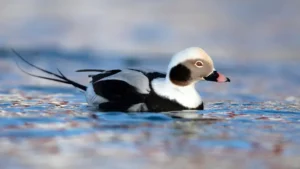

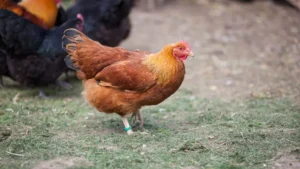
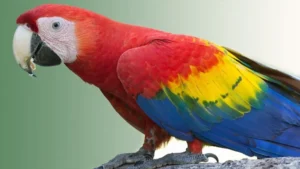

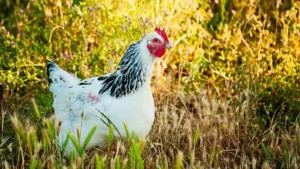


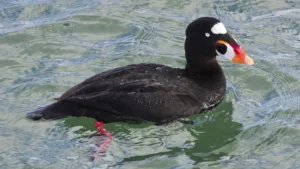
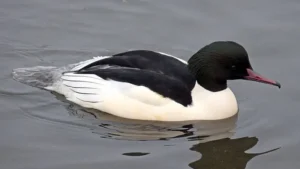
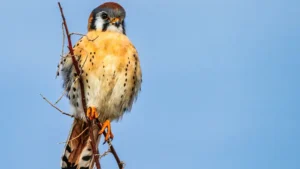
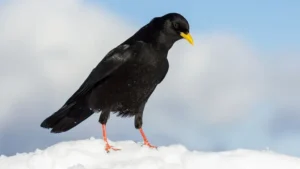
Leave your comment